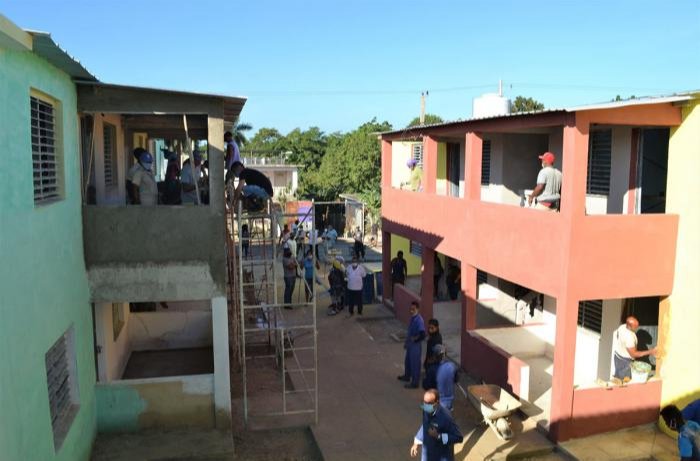
Constructive social actions to improve the quality of life in the neighborhoods continued in 2022.
By María Josefina Arce
Constructive social actions to improve the quality of life in the neighborhoods continued in 2022. The difficult economic situation generated by the more than two years of the COVID-19 pandemic and the reinforcement of the U.S. blockade did not prevent Cuba from continuing with its program to transform communities.
It is true that resources have been limited. They have had to be allocated to the most pressing problems and many have yet to be solved, but as far as possible, positive changes have continued to be promoted in various localities.
As Cuban President Miguel Díaz Canel has reiterated on several occasions, these actions have an integral and permanent character, and are based on dialogue with the inhabitants, who are actively involved.
And as he has pointed out, with what we have and the existing potentialities in each community, even if they are not sufficiently exploited, the accumulated problems can be solved.
It is a reality that those who know best the existing needs are the residents in those areas, where also live people with different professions and trades that can contribute a lot in this effort, which should be of all.
We also count on the support of organizations and institutions located in these areas, in addition to the assistance of non-state economic actors.
Actions in vulnerable neighborhoods are aimed at improving infrastructure and services and raising the quality of life of their inhabitants, without forgetting their cultural and spiritual growth.
Thus, schools, medical offices, shopping malls and playgrounds have been restored, while at the same time work has been done on building maintenance and sanitation.
And if the participation of the population has been essential, so has the support of universities and students in the diagnosis of problems and vulnerabilities.
But this is a program with a profound approach that serves single mothers with several children and other vulnerable people, and has enabled the incorporation of young people to study and work.
This movement began in Havana and has spread to the rest of the country. In the Cuban capital, more than 100 neighborhoods have been transformed, while almost 40 historic sites are being rehabilitated.
An experience that is being developed in the rest of the country, according to the particularities of each territory and the material and social problems that affect them.
The Cuban president stressed that this is a program that is here to stay, as it is a sign of the revolution's commitment to continue advancing in the welfare of the population, even in the most complex economic conditions.

